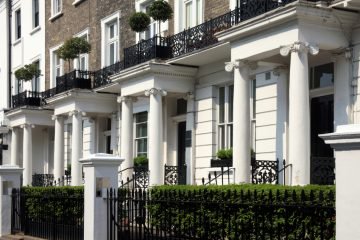London’s Housing Crisis Defined in One Statistic
London’s housing crisis has been summed up after it was found that seven out of ten houses on one street in Kensington are second homes.
The 300 metre-long street, Ashburn Place, in West London has 131 residential properties, of which 70% are not classed as a main home, revealed Kensington & Chelsea Council.
The Council found the figures by a Freedom of Information request by The Steeple Times.
The statistic indicates that Kensington & Chelsea has the highest proportion of second homes of any densely populated area of England. The City of London and Isles of Scilly have more second homes, but are more sparse.
The City of London has a population of just 7,000, with a high concentration of offices rather than homes.
The changing population in this area has caused high-profile businesses to close recently. Companies are not getting enough custom because local residents are moving away and being replaced by second homeowners who do not constantly live there.
As a result, many areas in central London are becoming empty, with fewer permanent residents.
Ashburn Place has a considerably higher proportion of second properties than other streets in the top five. Second place is Sloane Avenue, a walk away from Ashburn Place, where four in ten houses are second homes.
The Isles of Scilly is experiencing similar problems. Low average wages and spiralling property prices due to the amount of second homes means that the wealth of some Scilly residents is equal to that of Slovakia and Slovenia.


